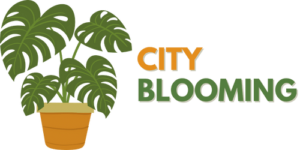The 45-Second Trick For City Blooming
Fascinated in growing food for sale in the City of Chicago? Below is a listing of often asked questions concerning the policies and laws that growers need to consider when preparing a city agriculture project.
The zoning amendment does not change any type of other codes taking care of composting, structure licenses, buying or renting City had home, organization licenses or ecological contamination. There are existing codes that regulate these concerns and they stay in full result and may be suitable to your project. Community yards are commonly had or managed by public entities, civic companies or community-based companies and preserved by volunteers.
Urban ranches expand food that is intended to be offered, either on a not-for-profit or for-profit basis. Due to their business objective, metropolitan farms need an organization permit.
City Blooming for Dummies
Composting is permitted however just for plant material that is generated and utilized on site. The quantity of compost product can not surpass 25 cubic yards at any kind of provided time according to the standards in 7-28-715 of the City's Municipal Code. Yes. Due to the fact that the dirt at most brand-new garden sites needs amending, compost, dirt, timber chips, or other products can be gotten to construct or boost the growing space - garden care.

If a structure permit is needed then the hoophouse will be considered an accessory structure. You can discover more concerning the building authorization demands by calling the Department of Buildings. The 25,000-square-foot dimension limit is planned to avoid a single neighborhood garden from dominating an offered block or interfering with the block's existing household or industrial character.
The limit does not apply to yards located in Public Open Area (POS) areas. Can there be more than one neighborhood garden that is 25,000 square feet on a single block? Secure fencing is not required, nonetheless, yards that have big auto parking areas may be required to set up fence or other landscaping attributes.
The Buzz on City Blooming
B1 & B2 areas require that all commercial usage activities be carried out inside. Is fencing needed for urban farms? Fencings may be called for, along with landscaping and testing, for specific car park locations and outdoor job or storage space areas depending on location and the particular task taking area.
Yes. Urban ranches need structure authorizations and zoning approvals before building. Various other kinds of city evaluation may be required depending on details frameworks, activities, dimension, landscape design, licensing, public heath and stormwater administration issues. Many of these requirements are determined in the project design or allowing process, nevertheless, the applicant may be accountable to separately determine details licenses or permits that may be called for.
Yes. The sort of certificate is established by what is happening at the website. The Department of Business Affairs and Customer Security can aid figure out the certain sort of service permit that's called for. Yes. Off street vehicle parking is required for the majority of commercial tasks in Chicago. The called for number of garage is based on the number of staff useful source members dealing with website and not the square footage of the growing area.
Fascination About City Blooming

Yes. An urban farm can market garden compost product generated on site, nevertheless, the procedure must adhere to the laws in 7-28-715 of the Chicago Municipal Code. Yes. Aquaponic systems are allowed inside your home on urban farms in several zoning districts. A zoning evaluation and building permit is required in order to install structures or systems and an organization certificate is called for as defined over.
As much as five hives or colonies of honey may be kept as an accessory use. Beekeepers have to sign up with the Illinois Department of Agriculture. For more details regarding the proposed zoning modification you might call the Department of Housing and Economic Growth, Bureau of Planning and Zoning at 312.744.8563.
, which takes location in rural areas at the side of residential areas.
The Only Guide for City Blooming
, who look for to develop social networks started on a shared principles of nature and neighborhood holism. These networks can develop by means of formal institutional assistance, becoming incorporated right into local community preparation as a "shift community" movement for sustainable urban development.
The extra direct accessibility to fresh veggie, fruit, and meat products that may be become aware through city agriculture can enhance food security and food safety while reducing food miles, resulting in reduced greenhouse gas exhausts, thus adding to climate change mitigation. A few of the first proof of city farming comes from Mesopotamia.
Comments on “City Blooming Fundamentals Explained”